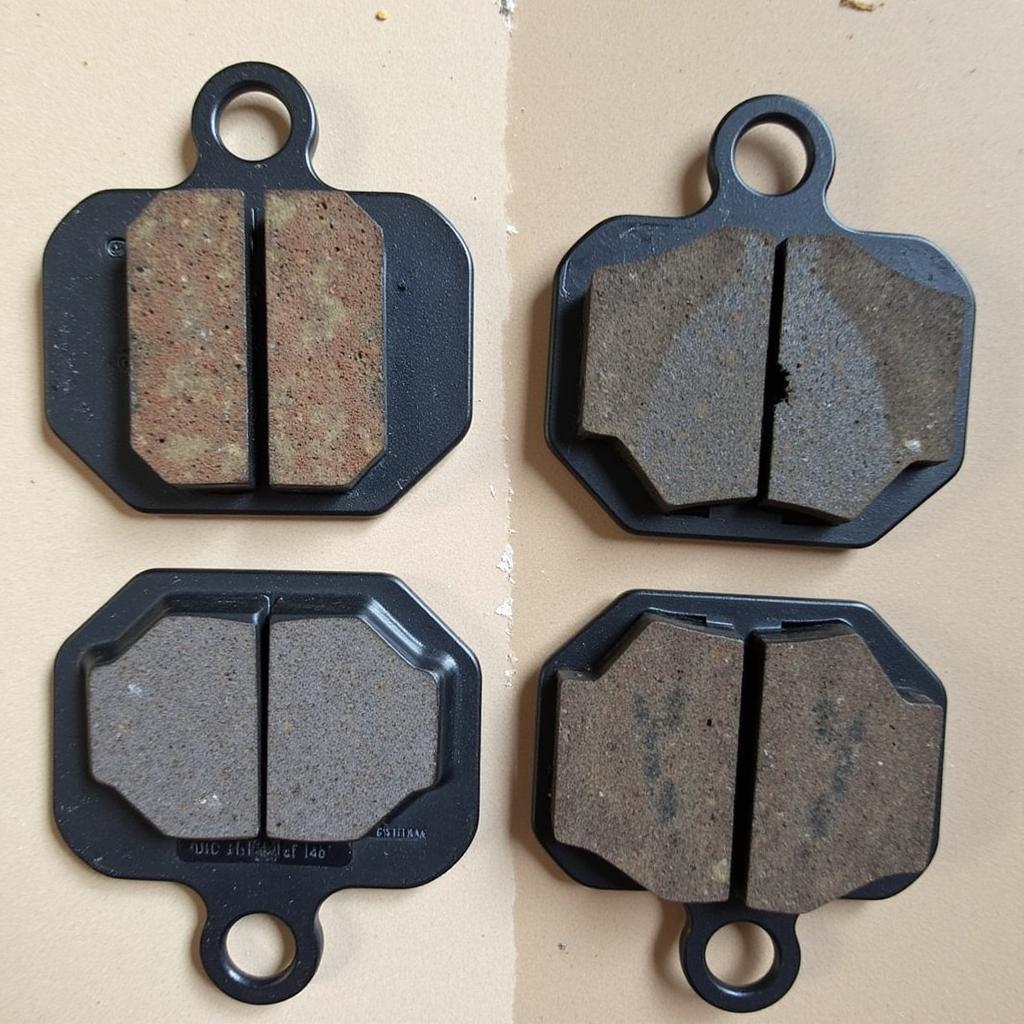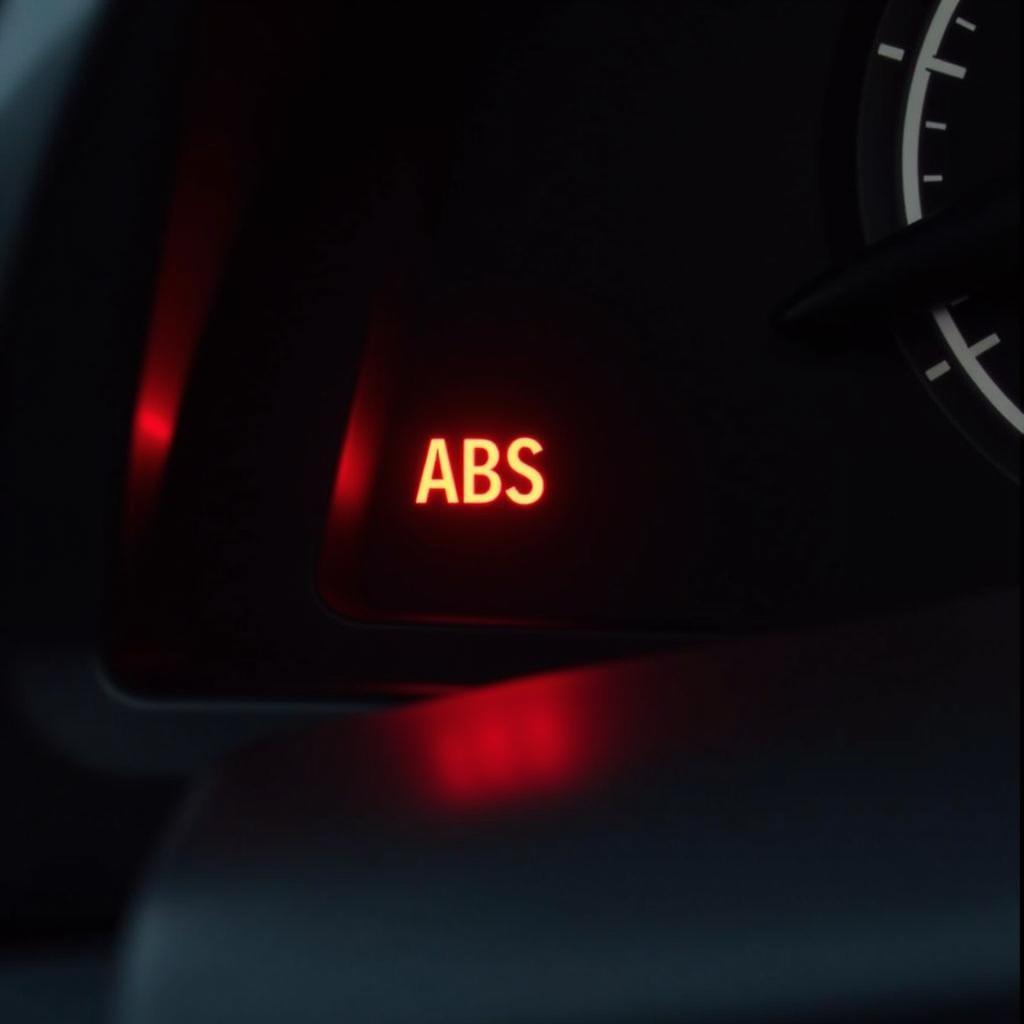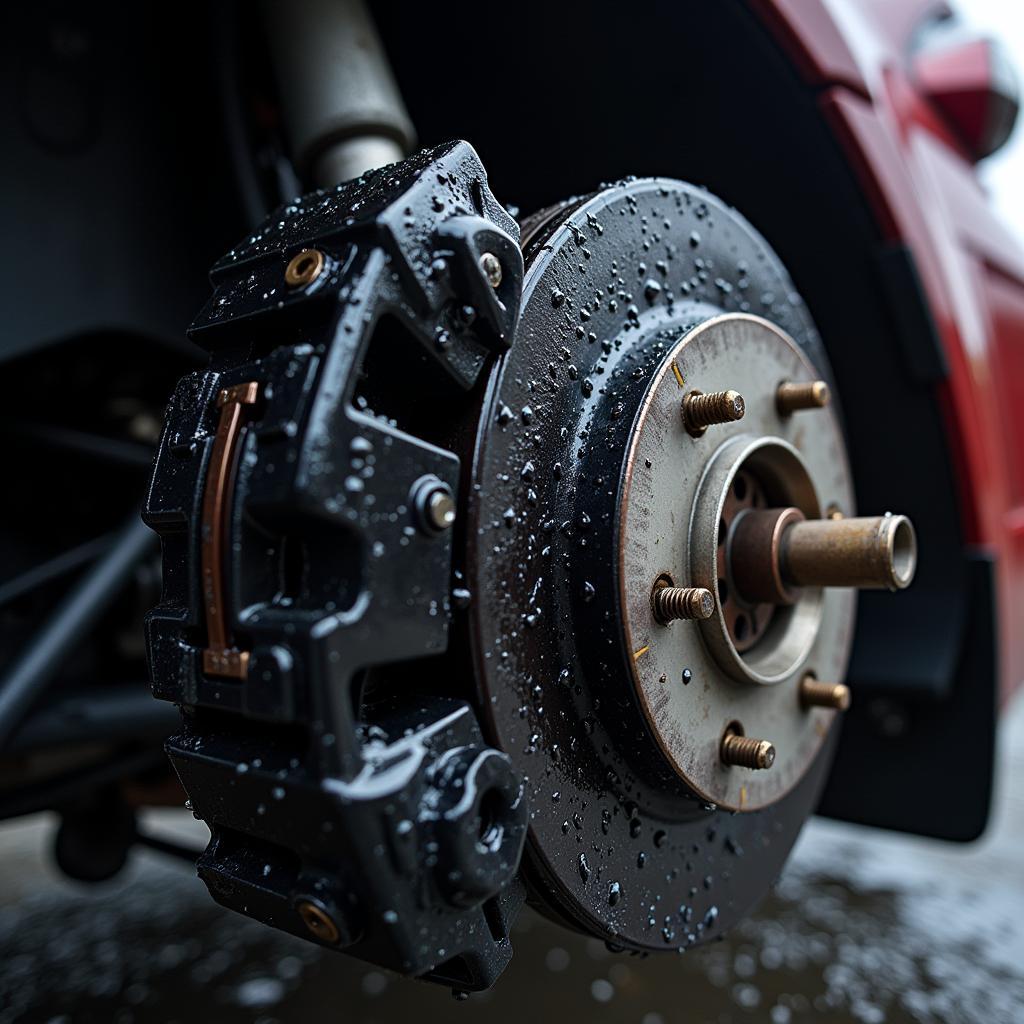The brake warning light on your dashboard is a crucial safety feature, illuminating when your car’s system detects a potential braking problem. Ignoring this warning light could lead to dangerous driving conditions and costly repairs. This comprehensive guide will explore the common reasons behind a lit brake warning light and provide you with actionable steps to diagnose and address the issue.
Common Causes of a Brake Warning Light
There are several reasons why your brake warning light might turn on, ranging from simple fixes to more serious issues requiring professional attention. Let’s delve into the most frequent culprits:
1. Low Brake Fluid Level
One of the most common reasons for the brake warning light is low brake fluid. Brake fluid is essential for transmitting force from the brake pedal to the wheels, allowing your vehicle to stop.
How to Check Your Brake Fluid:
- Locate the brake fluid reservoir: This is usually a translucent plastic container situated near the firewall on the driver’s side. Consult your car’s owner’s manual for the exact location.
- Check the fluid level: The reservoir will have minimum and maximum level markings. Ensure the fluid level is within this range.
- Top up if necessary: If the level is low, carefully add the correct type of brake fluid recommended by your vehicle manufacturer.
Expert Insight:
“Always use the brake fluid type specified in your owner’s manual. Using the wrong type can damage your brake system and compromise braking performance.” – John Miller, Certified Automotive Technician
2. Worn Brake Pads
Brake pads are designed to wear down over time as they generate friction to stop your vehicle. When the pads become too thin, a sensor will trigger the brake warning light.
Signs of Worn Brake Pads:
- Squealing or screeching noises when braking.
- Grinding sound when applying the brakes.
- Vibrations felt through the brake pedal.
If you experience any of these signs or suspect your brake pads are nearing the end of their lifespan, it’s crucial to have them inspected and replaced by a qualified mechanic.
 Worn Brake Pads
Worn Brake Pads
3. Faulty Brake Lines or Hoses
Brake lines and hoses carry brake fluid from the master cylinder to the wheels. Over time, these components can deteriorate, leak, or become obstructed, disrupting the flow of brake fluid and triggering the warning light.
Inspecting Brake Lines and Hoses:
Visually inspect the brake lines and hoses for signs of cracks, leaks, or bulges. These are often found near the wheels or under the hood. If you notice any damage, it’s crucial to seek professional repair immediately.
Expert Insight:
“Brake fluid leaks are a serious safety concern. If you notice a leak, avoid driving your car and contact a qualified mechanic to address the issue promptly.” – Sarah Thompson, Automotive Safety Expert
4. ABS (Anti-lock Braking System) Issue
The ABS system prevents wheel lock-up during hard braking, ensuring you maintain steering control. A malfunctioning ABS module, sensor, or wiring can illuminate the brake warning light.
Diagnosing ABS Problems:
Diagnosing ABS issues typically requires specialized equipment. If you suspect a problem with your ABS system, it’s best to consult with a qualified mechanic for diagnosis and repair.
 Illuminated ABS Light
Illuminated ABS Light
What to Do When Your Brake Warning Light Comes On
If your brake warning light illuminates while driving:
- Remain calm: Don’t panic. Pull over to a safe location as soon as possible.
- Check for obvious signs: Inspect your brake fluid level and look for any visible leaks or damage to your brake lines or hoses.
- Seek professional help: If you can’t identify the problem or notice any leaks or damage, it’s best to err on the side of caution and contact a qualified mechanic for diagnosis and repair.
Conclusion
Addressing a lit brake warning light promptly is crucial for ensuring your safety and the safety of others on the road. While some causes might be simple to fix, others require professional expertise. By understanding the common reasons behind this warning signal and taking appropriate action, you can ensure your braking system remains in optimal condition, providing you with peace of mind behind the wheel. Remember, never ignore a brake warning light – your safety depends on it.


